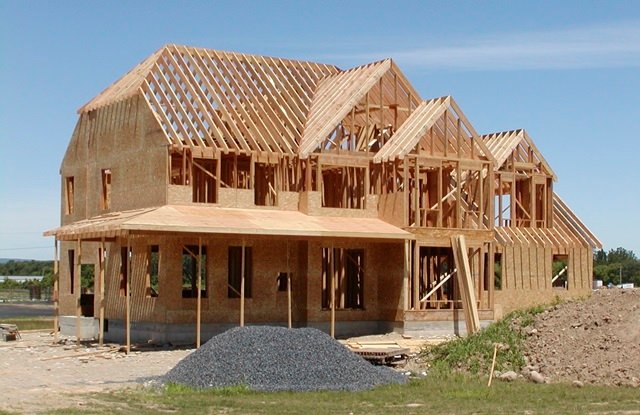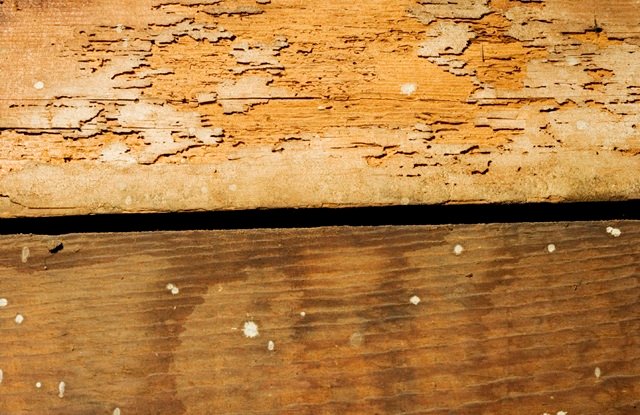Risks & Drawbacks of a Termite Infestation
Since large-scale commercial construction projects are expensive, they should have the finest protection available not just security-wise but also in regards to bug protection.
Examples of these projects are hospitals, schools, and elderly care centers. However, they too aren’t protected enough from the dangers associated with termite damage. What are these dangers? Let's explore them below:
Risks Involved in a Pest Attack:
Termites are present throughout Australia, even though they favor tropical and warmer conditions and have varying colony sizes.
According to industry estimates, they damage about 130,000 homes annually, with the average cost of repairing pest damage coming in at $10,000.
Strangely there’s no data available for commercial structures. Because building owners do not wish to publicize pest attacks or damage. It is reasonable to assume, nevertheless, that the numbers could rise if they attack sizable commercial properties.
According to James Damianopoulos, COO and director of TMA Corporation, for commercial projects, the physical barrier's integrity, quality, and expert installation should be given top priority. It is the sole method for establishing a long-lasting, successful pest control system.
Pest protection is not a given for steel frames or treated structural timbers. They can target MDF fixtures, cabinets, timber flooring, carpets, electrical and computer wiring, and MDF fixtures once they gain access.
Furthermore, normal insurance policies do not cover termite damage.
Pests pose a persistent threat to all types of properties in mainland Australia, ranging from homes to the biggest commercial construction projects. Protection plans are essential for shielding stakeholders' reputations and finances from damage.
Financial Risks:
Termites are estimated to cause $22 billion in damage to cities and metropolitan regions annually worldwide.
The information available on their damage risks and costs is more specific to residential properties; these numbers provide helpful information on the potential for attacks on all types of properties, from residences to large establishments like schools, hospitals, and assisted living facilities.
Let's look at the following data regarding termite damage costs to Australian homeowners:
- Australia has 7.2 million homes.
- An estimated 650,000 people are impacted by termites.
- Around 130,000 new attacks are reported annually.
- The average cost of correction is $10,000.
- $650 million calculated annual expenses per year.
According to estimates, such attacks have affected or will affect 10% to 20% of Australian homes at some point in their history. This number can reach 65% in some higher-risk regions, such as South East Queensland, with an annual cost of $4 billion.
The Queensland Department of Housing spent $410,000 controlling termite attacks in public housing during the 1999–2000 fiscal year. The estimated costs of repairing damage to a property in the South East Queensland regions of Ipswich, Woodridge, and Capalaba range from $18,000 to $60,000.
Treatment for termite attacks in residential premises typically costs $1500, while repairs for each affected property come out to $10,000 on average.
Know your Enemy:
Termites are common around the world and play a vital role in the ecology of our soil. These pests cycle decaying organic matter to improve soil pH, organic carbon content, water content, and porosity in their native habitats.
Their harmful effects occur when they gain access to residential areas, business buildings, and other things. And herein lie the dangers for large-scale, highly valued project investors, builders, and architects. Even though insect damage, repairs, and preventative measures can be expensive for residential homes, the expenditures are far higher for commercial sites.
When termites get into a property, they typically start out very busy and cause damage that is frequently not noticed until it is quite severe. The annual economic cost of insect damage and prevention is estimated to be in the billions on a global scale.
Methods of Construction:
Sadly, there isn't a building technique that can ensure protection against them. They can enter buildings made of steel frames and treated wood, as was previously described.
For this reason, during construction, specifiers ought to incorporate a robust provision requiring the installation of a tried-and-true insect management system.
Although the idea is straightforward—to prevent insects from accessing hidden openings with a robust, trustworthy, and long-lasting barrier—the implementation might be complicated. It is recommended to deal with a team that has a long history of successful installations behind them because the intricacy of building types and the variables that come with commercial projects can be difficult for novice contractors.
In this lies one of the key differentiators: our skilled installers and methods of installation.
Our system is much more than just our industry-best stainless steel mesh; it also includes the extra value we provide to our customers in the form of our expertise, experience, investment in product development, and independent Warranty Fund support.
Understanding the surroundings, the variables, and the unique issues that arise on commercial construction sites is essential to the outcome. Our network of seasoned individuals is committed to reducing risk and safeguarding not just the structure itself but also the standing of the builders and architects with whom we collaborate.
Chemical Vs Physical:
Organochlorines were banned from use as termiticides in Australia in the middle of the 1990s due to concerns about environmental and public health.
The development of the Termimesh System, which is not only safer and more environmentally friendly than chemicals but also more effective when put properly, was spurred by the trend away from chemicals as practical protection solutions.
These days, there are still chemical choices that fall roughly into the categories of curative and preventive care. It is possible to treat newly constructed structures by applying a chemical barrier around and beneath the slab.
Chemical reticulation can be used to disseminate the chemicals into the ground to form a barrier in situations when under-slab access is not feasible or feasible. Additionally, insects that are already present are treated with chemicals such as spot treatments, gasses, sprays, or baits.
The truth is that chemicals degrade, in contrast to a physical barrier. Because they need to be reapplied every few years to retain protection, they are a less dependable and persistent solution.
Chemicals don't appeal to architects and builders who prioritize sustainability and the environment. A stainless steel mesh barrier is a safer, more efficient, and ecologically friendly option for risk mitigation and protection when compared to chemicals.
Without a doubt, insect management solutions that are well-developed and provide durability and performance over time without requiring the use of chemicals are the way of the future. They pose a clear and well-documented concern in Australia, one that calls for creative solutions.
For large-scale development projects, architects and builders will be more driven to select solutions that limit risk due to the persistent threat of termite attacks in most Australian cities and towns.
These insects inflict severe and widespread damage to structures of all kinds throughout Australia. Such infestations are a significant danger in all commercial construction projects due to their complex nature. The integrity of the building may be compromised if a subpar insect control system is implemented. Recall that the risk of an attack is equal for properties with steel frames vs those with timber frames.
Architects, builders, and investors in these high-value development projects face significant problems due to the financial and economic risk of termite damage to Australian residential and commercial structures.
We urge architects and construction experts to incorporate the most intelligent anti-termite solutions and to take the finest safeguards in building design and construction specifications.
About the Author: Muzi Tsolakis is the founder of Protech Pest Control, Melbourne a well-reputed company known for providing extensive termite treatment along with removal and control services for other bugs.



